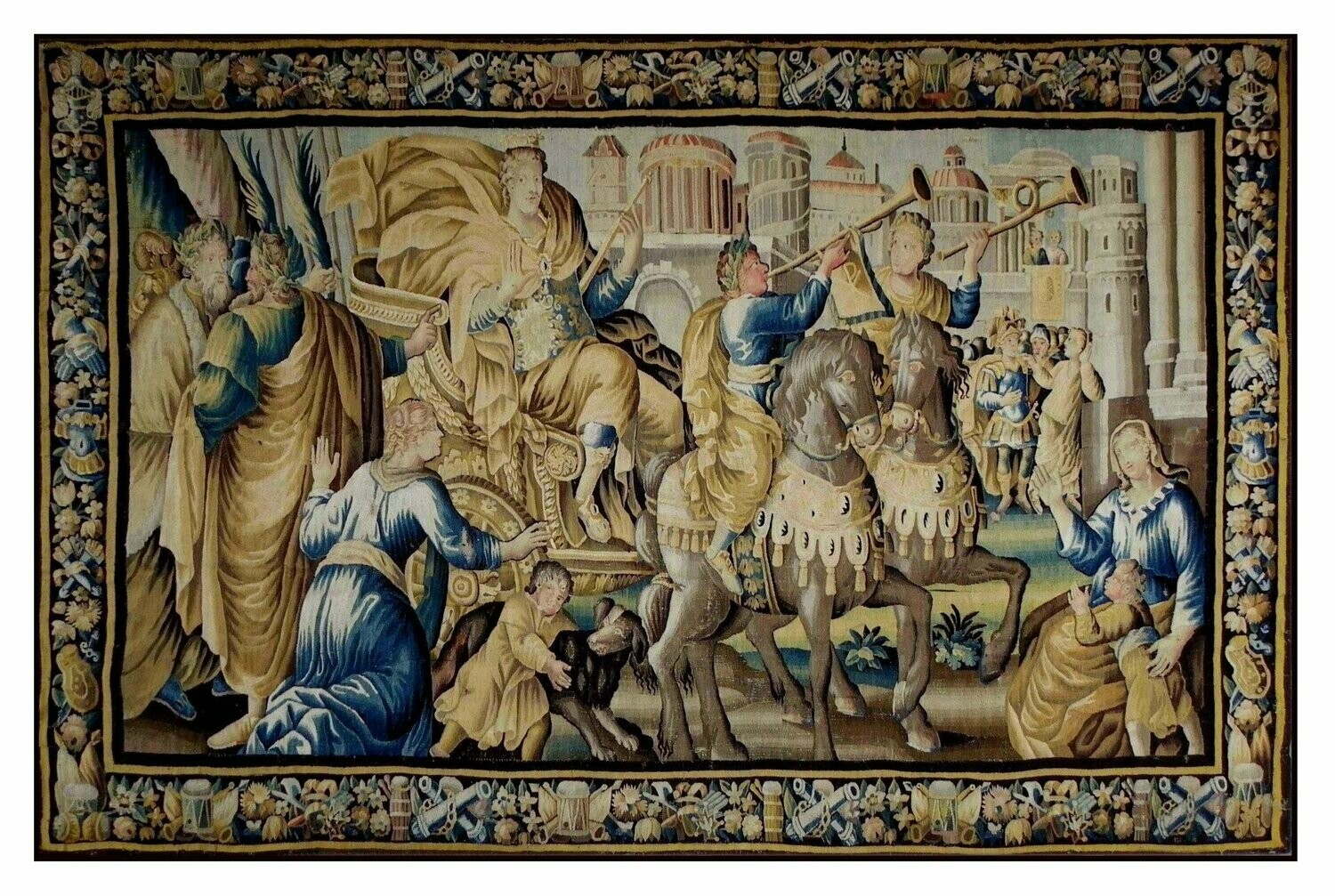Felletin's tapestry - Alexander's Victory Entering Babylon - 17th century - Size: L460xH280
€0.00
In stock
Product Details
Description
Reference No.: 78J/ 2496
Origin: France - Felletin
Period: 17th century
Provenance: Private Collection
Composition: Wool and silk
Dimension: W 4.60 x H 2.80
Tapestry of Felletin, Alexander's Victory Entering Babylon - XVII Period
Tapestry of Felletin, woven in wool and silk according to Charle Le Brun around 1680.
Low-smooth tapestry in excellent condition, fresh colours.
a piece of the same series is at the Château de Chaumont-sur-Loire.
The taking of Babylon
The success at Gaugamela opened the road to Babylon for Alexander, who surrendered after negotiations, after three weeks of battle, at the end of October 331. We now have a precise knowledge of this period thanks to the discovery of a Babylonian tablet that traces the facts since the end of the Battle of Gaugamèles. We learn how the city authorities tried to negotiate with Alexander. In the event of remission, the latter ensured that religious traditions were maintained and that sanctuaries were not violated.
He also gave orders to restore the sanctuary of Marduk, which was falling into ruins. He guaranteed them the maintenance of most of the dignitaries in their posts, such as the Persian Mazaios (or Mazeo or Mazée or Mazday), who had been ordered by Darius III to defend Babylon, of which he was appointed Satrape, a post to which Alexander confirmed. With these concessions, which were of little importance to Alexander, he avoided a long siege and put away part of the Achaemenid aristocracy on his side.
The King stayed there for nearly five weeks, while Darius III, on the run, tried to assemble an army, but the Persian forces were increasingly demoralized with the constant threat of a surprise attack from the Macedonian, which led to many desertions. Alexander on his side took the direction of Susa, which he reached in twenty days. The city, without a defensive wall, surrendered in January 330.
The King had sent General Philoxene to the city before him so that he could seize the important treasure that was there of about 40,000 talents. A significant part of this money was sent to Antipatros (or Antipater) for use in his fight against Sparta, Alexander will also recover various works of art stolen by Xerxes (486-465) in Sandstone in 480, including the famous statuary group of Tyrannicides, Harmodius and Aristogiton, which he had returned to Athens. The King distributed many of the city's riches to his soldiers as rewards: Parmenion, for example, recovered the house of Minister Bagoas, who had brought Darius III to the throne, in which he found many rich clothes.............
Our house assures you the sale of a tapestry with invoice and approved expertise, well cleaned, in good condition with its fixing system. If necessary, we will inform you of the work that has been done. All our tapestries can be presented to you at your home in France and neighbouring countries before your final decision.
Save this product for later
Display prices in:
EUR



